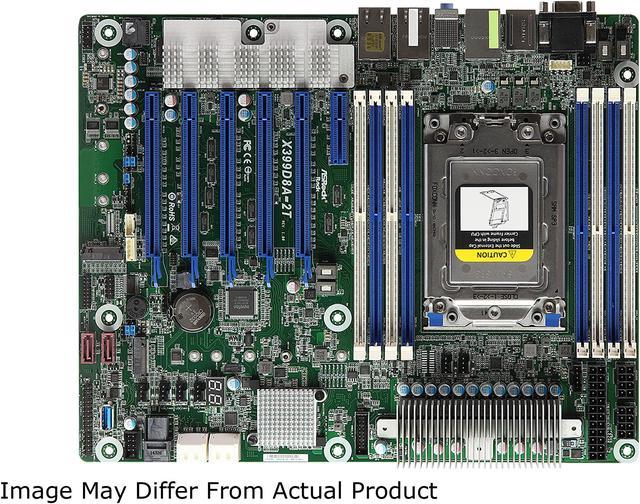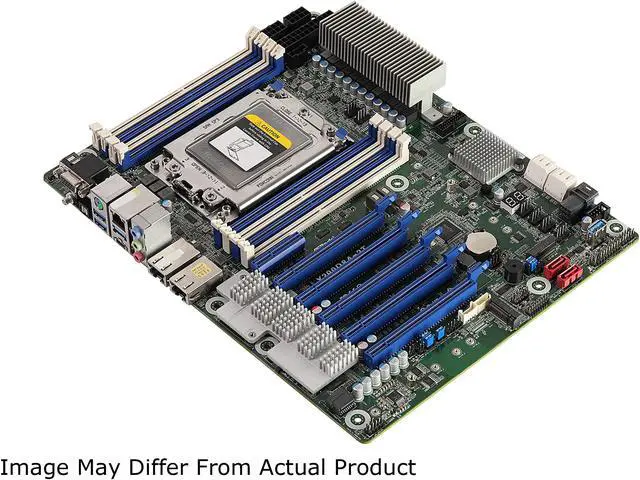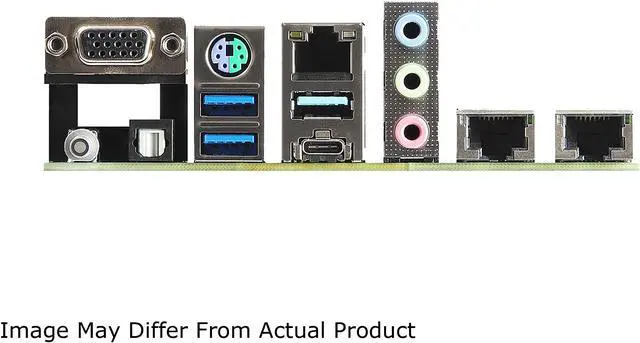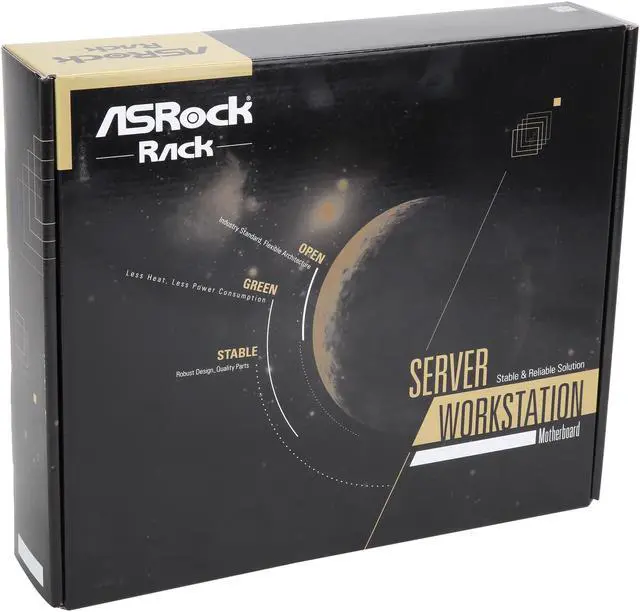Your Browsing History




Make informed decisions with expert advice. Learn More
| Brand | AsRock Rack |
|---|---|
| Model | X399D8A-2T |
| CPU Socket Type | Socket sTR4 |
|---|---|
| CPU Type | Supports AMD Ryzen Threadripper Processors |
| North Bridge | AMD X399 |
|---|
| Number of DDR4 Slots | 8 x 288-pin |
|---|---|
| DDR4 Standard | DDR4 ECC U-DIMM |
| Maximum Memory Supported | Max. 128GB, DDR4 ECC and non-ECC, Un-buffered Memory |
| PCI Express 3.0 x16 | 5 slots - Slot2: Gen3 x16 link, auto switch to x8 link if Slot3 is occupied. - Slot3: Gen3 x8 link - Slot4: Gen3 x16 link, auto switch to x8 link if Slot5 is occupied. - Slot5: Gen3 x8 link - Slot6: Gen3 x16 link |
|---|---|
| PCI Express x4 | PCIe 2.0 x 4 Slot7: Gen3 x4 link |
| Other Slots | 1 x M-key (PCIe 3.0 x4 or SATA 6Gb/s shared with SATA port) support 2230/2242/2260/2280/22110 1 x M-key (PCIe 3.0 x4) support 2230/2242/2260/2280/22110 ( Reserved BOM option for OCU Link). |
| SATA | X399: 8 x SATA 6Gb/s; 2 x SATA DOM, 4 x via mini-SAS HD, 2 x SATA 7-pin (one shared with M.2) |
|---|---|
| Additional SATA | Asmedia1061: 2 x SATA 6Gb/s |
| Onboard Video Chipset | Aspeed AST2500 |
|---|
| Number of LAN | 2 x RJ45 10 GbE by Intel X550-AT2 |
|---|
| Video Ports | 1 x D-Sub |
|---|---|
| RJ45 | 2 x RJ45: 2 x 10 GbE by Intel X550-AT2 - 1 x IPMI dedicated LAN - LAN Ports with LED (ACT / LINK LED and SPEED LED) |
| USB 3.0 | 2 x USB 3.0 |
| USB 3.1 | 2 x USB 3.1 Gen2 Port (1 x type A, 1 x type C) |
| Features | Supports AMD TR4 Socket Ryzen Threadripper Series CPUs Support quad channel DDR4 total 8 DIMM slots Support 8 x SATA 6Gb/s by AMD X399 and 2 x SATA 6Gb/s by Asmedia 1061 Support 2 x M.2 (PCIe 3.0 x4) up to 22110 form factor Support 3 x PCIe 3.0 x16, 2 x PCIe 3.0 x8 Support Dual 10 GbE by Intel X550-AT2 |
|---|
| Form Factor | ATX |
|---|---|
| Dimensions (W x L) | 12.0" x 9.6" |
| First Listed on Newegg | August 26, 2019 |
|---|